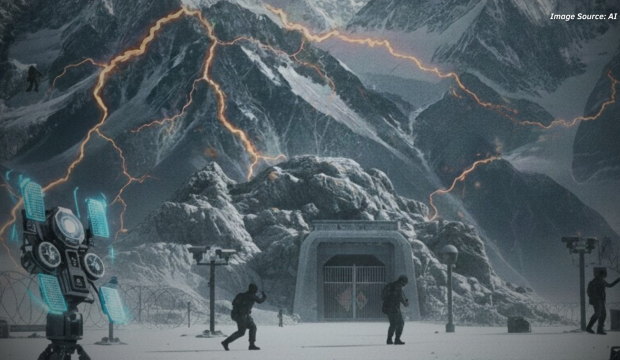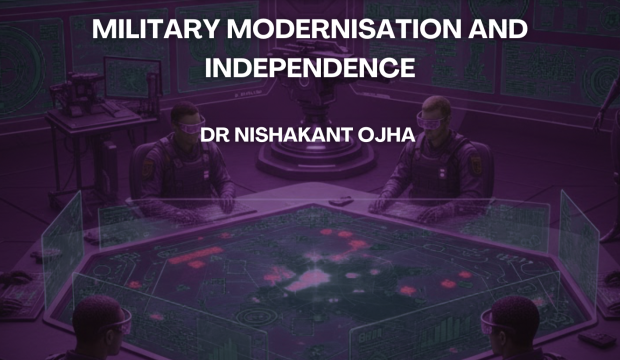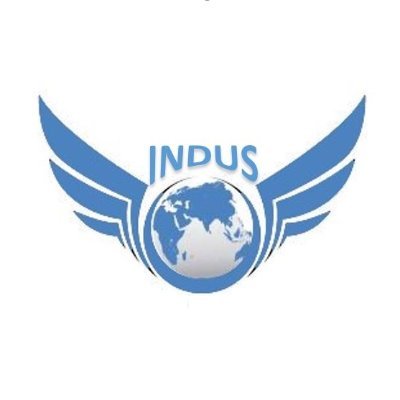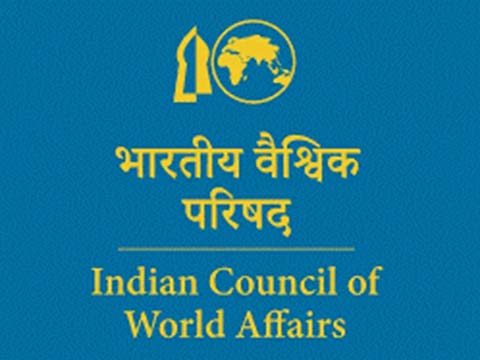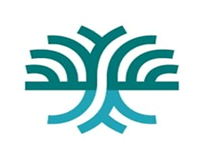Introduction
In the contemporary period, when global power struggle dominates the global security architecture, there has been a rise of contestation in the domain of digital infrastructure, where undersea cables have become significant for global internet, economies and intelligence operations. Famously referred to as ‘submarine cables’, these fibre-optic cables transport more than ninety-five per cent of global internet traffic,1 comprising economic services and strategic communications between countries and continents.2 Additionally, being significant for a nation’s digitalised economy, these invisible arteries also carry sensitive information related to national security, making their protection and reliability crucial.3
In present time, India has also started to realise their significance, as witnessed in the latest initiatives like ‘Quad Partnership for Cable Connectivity and Resilience’ (2023) concentrating on boosting submarine cables in the Indo-Pacific region,4 and Pan-India Coastal Defence Exercise Sea Vigil 24 which focused on landing cable stations along with other significant maritime initiatives.5 Nevertheless, with the growing competition in Indo-Pacific, India should now focus more on the Bay of Bengal (BoB) region, which links the Indian Ocean to the Pacific Ocean, connecting India to Southeast Asia, which is essential in contemporary maritime, regional and digital connectivity.6 As hybrid warfare and cyberattacks continue to evolve, India must focus closely on the BoB region, comprehending it as a significant strategic location to safeguard its digital and national security priorities.
India’s Crucial Dependence on the Bay of Bengal’s Undersea Cable Network
India’s digital security excessively relies on undersea cable networks that travel through eastern coasts of landing stations like Chennai, Visakhapatnam, Tuticorin, Digha (planning stage) and Andaman and Nicobar Islands (domestic connectivity). These submarine cable hubs are significant strategic points that link India to other parts of the world, mainly to the regions of West Asia, Europe and Southeast Asia via some of the globe’s critical undersea cable network.7 From these, significant undersea cables, Bay of Bengal Gateway (BBG) (connects India’s Chennai and Tuticorin to Southeast Asia, Gulf region and later further extend to some parts of Europe indirectly); i2i (India-Singapore) Cable Network (connects India’s Chennai to Singapore and indirect access to other part of Southeast Asia) and SEA-ME-WE 6 (connecting India’s Mumbai and Chennai to South Asia, Southeast Asia, Middle East and Europe).8 These linkages are essentially significant for India, as it transports enormous amounts of digital data necessary not just for market-driven goals but also for national security purpose.9 They allow military communications, intelligence gathering and data sharing with partner countries, command and control systems, and GPS-based defence system depends on these cables which supports overall military stability.10 To substantiate this point, in 2020, PM Modi, while inaugurating cable connectivity to Andaman & Nicobar Islands (CANI), highlighted the increasing significance of the region and undersea cables for better connectivity of digital India and fast-paced development of national security.11 Currently, India serves as a hub for seventeen international undersea cables over fourteen different landing stations.12 According to the latest data provided by the government of India, the total active capacity of these fibre cables is approximately 138.606 Tbps and 111.111 Tbps.13
Yet, India’s crucial reliance on specific cable landing points and network systems substantially threatens strategic stability.14 In contrast to air stations and seaports, the cable landing stations and undersea cable networks are more sensitive to vulnerable threats. Most cable stations lack strong security protection and operate with limited military supervision, despite their significance in 21st-century high-tech warfare.15 Without strong digitalised and proper infrastructural safeguards, these landing points and network systems are subjected to several dangers:
Natural Disasters
The BoB region is at significant risk of natural disasters like cyclones, coastal erosion, floods and landslides.16 The region records an average of five to six cyclones forming in the Bay of Bengal yearly, with rising severity as a result of the changing climate patterns.17 For instance, 2015, Cyclone Vardah struck India’s eastern coast, particularly places like Chennai and northern Tamil Nadu, resulting in a few deaths.18 According to the reports given by Bharti Airtel, a private Indian company, along with other privately owned companies like Vodafone, stated that “probably shook the undersea cable network across the Bay of Bengal”, which later affected the internet and telecom services in the eastern part of India.19 A significant occurrence in the Bay like this might cause devastation to several submarine cables and offshore stations, severing India’s military command-and-control systems, real monitoring data and protected data exchanges. In an emergency or involving a dispute, such damages could harm India’s military coordination and help opponents with a significant strategic edge.
Accidental Maritime Activity
Undersea cables are most often affected by illegal fishing, mechanical dredgers and ship anchors, particularly in coastal waters near landing stations where the undersea cables are more at risk of being threatened.20 According to the reports of the International Cable Protection Committee (ICPC), internationally, approximately 150-200 cable breakdowns and technical issues are reported yearly, and more than sixty to seventy per cent of these are brought on by commercial maritime operations.21 In the case of India, the densely populated Bay of Bengal region, with its heavy naval traffic, faces a vital challenge in protecting a stable environment around the undersea cables, creating a significant vulnerability. For example, as reported by the INDIA TODAY in January 2008, India’s internet connectivity was interrupted due to the damage of two undersea cable networks (Indian-owned FLAG cable and also SEA-ME-WE), which affected internet connectivity near the Mediterranean Sea.22 The damage to the cables was reported due to the anchoring of a ship near the coast off Alexandria, Egypt.
Disruptions due to Cyber-Attacks and Deliberate Sabotage by Non-State Actors
In the current era of digitalised warfare, secure and seamless data transmission is necessary for everything from satellite coordination to cyber defence.
However, submarine cables and offshore landing stations are nonetheless frequently seen as non-military assets, instead of as defence-critical infrastructure. This current viewpoint needs to change. These cables now form part of India’s core military infrastructure and should be protected with the same urgency as ports, airbases, or surveillance networks. With increasing risks, spanning from cyberattacks to intentional sabotage by state and non-state actors, overlooking their strategic significance is no longer viable.23
Over the past few years, non-state actors spanning from militant groups to structured criminal networks, have in most instances tried to destroy the undersea cable network and offshore cable hubs to interrupt strategic information operations without claiming responsibility. The attackers often try to cut the cable using submarines or unmanned underwater vehicles. Recently, in 2024, Asia-Africa-Europe-1, Europe India Gateway (EIG) cable networks in Red Sea-Western Ocean were disrupted most probably due to the actions of extremists Houthi group 24and in the year 2013 attacks by non-state actors in SEA-ME-WE 4 submarine cable (in Egypt)25 highlighted the issue that undersea cable networks are no more mere infrastructure; they have become immediate targets in geostrategic disputes, hybrid warfare and cyber-attacks.
Emerging Threat: China Factor
Apart from non-state actors, geopolitical competition between States has increased at a higher rate, which persistently risks national security and digital infrastructures in the era of digitalised warfare. According to the reports of Centre for Strategic and International Studies (CSIS), 2024, the overdependence on Chinese private companies of China for repairing and servicing of undersea cables gives access to espionage of governments to access highly sensitive military data of other states and also acquire knowledge on confidential data on location that would allow countries to damage cables and landing stations with efficiently and accurately.26
Chinese footprints have increased in the BoB region and across Indo-Pacific recently for its economic and geostrategic interests. For instance, China has launched China-Myanmar International terrestrial and submarine cable network (2014), which links China’s Yunnan region to the BoB via Myanmar27, resulting in both advantages and challenges for regional stability and balance of power in the region. Moreover, Chinese company like Huawei Merin has shown interests in Bangladesh’s Bangladesh Submarine Cable Company Limited (BSCCL) programs, particularly in the context of the SEA-ME-WE 6 submarine cable initiatives28, raising concerns over surveillance vulnerabilities in BoB region.
Latest findings provided by ORF India (2024) argues that China’s developing Digital Silk Road investments is growingly rapidly in India’s neighbourhood countries particularly in Sri Lanka (300 US$ millions); Thailand (1900 US$
millions); Bangladesh (1,130 US$ millions) and Myanmar (339 US$ millions).29 Chinese private companies like HMN Technologies have been engaged in supporting and developing undersea cables across the Indo-Pacific region, voicing worries regarding possible unauthorised monitoring and supervision.30 As significant numbers of India’s east-coast cables links through landing stations in Cox’s Bazar (Bangladesh), Matara (Sri Lanka) and Ngwe Saung (Myanmar), there is an increasing insecurity persisting that Chinese participation in the region could misuse these stations or cut the cables during an emergency, either interrupt India’s internet communications or evaluate its sensitive data and information. In a potential conflict, a deliberate attack- either hybrid/physical on offshore undersea cable stations or network systems- might devastate India’s defence command and national security. This developing Chinese digital presence signals a new frontier of digital contestation in the BoB region, which confronts India’s geostrategic domain and could result in prolonged reliance for immediate neighbourhood States on China.
India’s Preparedness: Gaps in Defence and Strategic Planning
Despite the growing significance of undersea cables globally, India needs a more robust and extensive national security system to safeguard these cables.31 While India has invested significantly in building naval infrastructures (like increased security of harbours), increasing maritime security after the attacks of 26/1132, it should be noted that the focus on submarine cables has mostly fallen beyond the purview of the military domain. This results in severe limitations across various crucial domains:
No specific/particular Naval or Coast Guard Groups Assigned for Undersea Cable Protection-
In contrast to critical maritime corridors and shipping lanes, which are vigorously tracked and patrolled by dedicated units of the Indian Navy, undersea cables and landing stations lack robust digitalised surveillance and infrastructure, particularly dedicated to it. 33 The Bay of Bengal region acts as an entryway to Southeast Asia. It is home to vital cable networks (BBG and SEA-ME-WE 5) which traverse through heavily trafficked, disputed and prone to natural calamities water. Therefore, it is a crucial national security limitation with no specialised naval and coastal guards entrusted with monitoring and safeguarding these cables.
Underdeveloped Indigenous Repair and Servicing Capability
India’s capacity to proactively take action against disruption of undersea cables or cyberattacks to landing stations in the region is to an extent limited, due to its reliance on foreign cable ships, vessels and companies located in Dubai and Singapore.34 Suppose there is a crisis management or an unforeseen calamity, in that case, postponements in repairing cable services might raise major security issues for India’s maritime interests.35 While there has a been proposal from National Security Council Secretariat (NSCS) with Département of Telecommunications (DoT) over the past few years regarding the building of indigenous vessels for installation and maintenance of undersea fibre cables, implementation is yet to be carried out.36
Limited Private-Public Cooperation–
The majority of undersea cable landing stations located are primarily owned by privately owned enterprises mostly referred as ‘cable-operators’ and a group of consortiums37 where there is an absence of a cohesive and collaborative framework between the privately owned companies and the eastern naval command, intelligence divisions and government bodies. Additionally, there is a lack of combined training sessions, crisis reporting mediums and emergency management strategies in the event of a disturbance in the region.
Recommendations for securing the Bay of Bengal Region:
Incorporate Undersea Cable Security into India’s Maritime Doctrine
India should officially acknowledge undersea cables and landing stations as essential maritime assets under its national security approach. The Indian Navy and Coast Guard can be assigned for proactive monitoring, guarding, inspecting, and tracking cable routes.
Develop Indigenous Cable Facilities and Joint Initiatives for Maintenance and Repair
India relies critically on foreign companies and ships for undersea cable repair and service. To lessen this gap, India should allocate funds in building indigenous cable ships and more specialised local technicians, managed by either the Department of Telecommunications (DoT) under the Ministry of Communications, Telecom Regulatory Authority of India (TRAI), the Ministry of Defence or through joint initiatives with private enterprises like Reliance Jio and Vodafone. This will give an advantage and should be developed with the idea of civil-military utility, facilitating swift implementation in times of emergency, accidents and disaster.
Cooperating with other nations through Regional Initiatives
India must take the initiative to include the undersea cable framework strategies under regional maritime groupings like BIMSTEC and IORA. India already collaborates with QUAD members on ‘Quad Partnership for Cable Connectivity and Resilience’ (2023) to protect the cables in the Indo-Pacific region, where India is actively working to build stable and protect cable infrastructure.38 In 2024, the Wilmington Declaration Joint Statement by QUAD members stated that “India has commissioned a feasibility study to examine expansion of undersea cable maintenance and repair capabilities in the Indo-Pacific” arguing that Quad members have taken initiative to support Pacific Island states in securing digitalised internet connectivity.39 Therefore, India should equally focus in the BoB region with other BIMSETC members to include joint initiatives like exchange of information on undersea cable disruptions, collaborating on safeguarding landing stations (Cox’s Bazar, Chennai, Ngwe Saung, Chennai) and forming a specialised BIMSTEC agency in Research and Development (R&D) to detect and recommend dual-civil-military solutions in protecting the cables and stations. These initiatives can potentially increase regional trust and cooperation, and bring security and stability, solidifying India’s position in the cybersecurity sphere in the BoB and the broader Indo-Pacific region.
CONCLUSION
As global competition broadens in the digital sphere, the Bay of Bengal region, known for its critical geostrategic position (international trade and energy security), is now emerging as a digital and connectivity hub. For India, securing undersea cables and landing stations is not only meant to protect digitalised connectivity, economy, and telecommunications, but also to secure India’s hard-earned sovereignty, and preserve its strategic autonomy in the era of digitalised warfare. These crucial submarine cables are now a significant aspect of India’s defence infrastructure. India should rapidly bring forward its strategic plan to integrate undersea cables into India’s national security framework.
DISCLAIMER
The paper is author’s individual scholastic articulation and does not necessarily reflect the views of CENJOWS. The author certifies that the article is original in content, unpublished and it has not been submitted for publication/ web upload elsewhere and that the facts and figures quoted are duly referenced, as needed and are believed to be correct.
References
Robin Chataut, “Undersea Cables Are the Unseen Backbone of Global Internet.” Down to Earth, April 2, 2024. URL- https://www.downtoearth.org.in/science-technology/undersea-cables-are-the-unseen-backbone-of-global-internet-95332.
Cannon, Brendon J. “Undersea Cable Security in the Indo‐Pacific: Enhancing the Quad’s Collaborative Approach.” Marine Policy 171, (October 18, 2024): 106415. doi.org/10.1016/j.marpol.2024.106415
Admin. “The Invisible Subsea Artery.” Top Management College in Kolkata | PGDM College in India Praxis, May 5, 2025. URL- https://praxis.ac.in/the-invisible-subsea-artery/.
Joseph, Alphy. “Quad Summit 2023 and Undersea Cables.” Indian Council of World Affairs, July 19, 2023. URL- https://www.icwa.in/show_content.php?lang=1&level=1&ls_id=9755&lid=6241
Ministry of Defence. “CULMINATION OF PAN-INDIA COASTAL DEFENCE EXERCISE – ‘SEA VIGIL 24.’” Press Information Bureau, Government of India, November 22, 2024. URL- https://www.pib.gov.in/PressReleasePage.aspx?PRID=2076147
Agarwala, Nitin, and Premesha Saha. “Is The Bay of Bengal Regaining Its Lost Importance?” Journal of the Indian Ocean Region 15, no. 3 (July 2, 2019): 336–45. doi- https://doi.org/10.1080/19480881.2019.1637572
TEJA POLCUMPALLY, ARUN. “India’s Critical Role in Safeguarding Undersea Cables.” 9DASHLINE. June 4, 2025. URL- https://www.9dashline.com/article/indias-critical-role-in-safeguarding-undersea-cables
Submarine Cable Map. “India.” TeleGeography, n.d. URL https://www.submarinecablemap.com/country/india
Bashfield, Samuel. “Digital Sovereignty: Securing India’s Submarine Cables.” The Diplomat. December 26, 2024. URL- https://thediplomat.com/2024/12/digital-sovereignty-securing-indias-submarine-cables/
Windward. “What Are Undersea Cables?” February 25, 2025. URL- https://windward.ai/glossary/what-are-undersea-cables/
Ministry of Communications. “Prime Minister Shri Narendra Modi Launches Submarine Cable Connectivity to Andaman & Nicobar Islands (CANI).” Press Information Bureau, Government of India, August 10, 2020. URL- https://www.pib.gov.in/PressReleasePage.aspx?PRID=1644712
Submarine Cable Networks. “India,” n.d. URL- https://www.submarinenetworks.com/en/stations/asia/india
Ibid
Khanna, Monty. “A Roadmap for Securing India’S Undersea Cables.” Observer Research Foundation, June 27, 2025. URL- https://www.orfonline.org/research/a-roadmap-for-securing-india-s-undersea-cables
Boulegue, Mathieu. “Arctic Seabed Warfare Against Data Cables.” Wilson Center, Polar Institute, August 2024. URL- https://www.wilsoncenter.org/sites/default/files/media/uploads/documents/Seabed-Warfare-Cables%20%281%29.pdf
Rajalakshmi, P.R., and Hema Achyuthan. “Climate Change as Observed in the Bay of Bengal.” Journal of Climate Change 7, no. 3 (September 2, 2021): 69–82. Doi- https://journals.sagepub.com/doi/abs/10.3233/JCC210020
Ibid
Moss, Sebastian. “Cyclone Vardah Damages Submarine Cables to Eastern India.” Data Center Dynamics. December 14, 2016. URL- https://www.datacenterdynamics.com/en/news/cyclone-vardah-damages-submarine-cables-to-eastern-india/
Ibid
Alexander Gehringer, Ferdinand, and Matthias Hespe. “How We Can Make Europe’s Maritime Critical Infrastructure More Resilient.” Konrad-Adenauer-Stiftung, April 14, 2025. URL- https://www.kas.de/en/web/auslandsinformationen/artikel/detail/-/content/how-we-can-make-europe-s-maritime-critical-infrastructure-more-resilient
Geneva. “Launch of International Advisory Body to Support Resilience of Submarine Telecom Cables.” International Telecommunication Union. November 29, 2024. URL- https://www.itu.int/en/mediacentre/Pages/PR-2024-11-29-advisory-body-submarine-cable-resilience.aspx
INDIATIMES NEWS NETWORK & AGENCIES. “Cable Damage Hits Internet Connectivity.” The Times of India, January 31, 2008. URL- https://timesofindia.indiatimes.com/india/cable-damage-hits-internet-connectivity/articleshow/2745082.cms
DOĞAN, Diren, and Cdr. (TÜR N) Deniz ÇETİKLİ. “Protecting the World’s Information Super-Highways: The Importance of Securing Underwater Communication Cables in the Digital Age.” In MARITIME CRITICAL INFRASTRUCTURE PROTECTION (MCIP) IN a CHANGING SECURITY ENVIRONMENT, 1st ed., 24–32. Istanbul: Maritime Security Centre of Excellence (MARSEC COE), 2023.
Associated Press. “Three Red Sea Underwater Data Cables Have Been Cut as Houthi Attacks Continue in the Vital Waterway.” The New Indian Express, March 4, 2024. URL- https://www.newindianexpress.com/world/2024/Mar/04/three-red-sea-underwater-data-cables-have-been-cut-as-houthi-attacks-continue-in-the-vital-waterway
Arthur, Charles. “Undersea Internet Cables off Egypt Disrupted as Navy Arrests Three.” The Guardian, March 28, 2013. URL- https://www.theguardian.com/technology/2013/mar/28/egypt-undersea-cable-arrests
Daniel Runde, Erin Murphy, and Thomas Bryja, “Safeguarding Subsea Cables,” Center for Strategic & International Studies, August 2024. URL- https://csis-website-prod.s3.amazonaws.com/s3fs-public/2024-08/240816_Runde_Subsea_Cables.pdf?VersionId=hn4OBAvGOF.c3WSZD9uJo6mGJviXZJWh&ref=broadbandbreakfast.com
Qiu, Winston. “China-Myanmar International (CMI) Terrestrial Cable Launches for Service.” SUBMARINE CABLE NETWORKS, November 15, 2014. URL- https://www.submarinenetworks.com/en/nv/news/china-myanmar-international-cmi-terrestrial-cable-launches-for-service
Shawki, Ahmed. “Four Int’l Firms in Race to Build Third Submarine Cable.” Submarine Telecoms FORUM, January 1, 2020. URL- https://subtelforum.com/four-intl-firms-in-race-to-build-third-submarine-cable/
Patil, Sameer, and Prithvi Gupta. “The Digital Silk Road in the Indo-Pacific: Mapping China’s Vision for Global Tech Expansion.” Observer Research Foundation, January 3, 2024. URL- https://www.orfonline.org/research/the-digital-silk-road-in-the-indo-pacific-mapping-china-s-vision-for-global-tech-expansion
Daniel Runde, Erin Murphy, and Thomas Bryja, “Safeguarding Subsea Cables,” Center for Strategic & International Studies, August 2024. URL- https://csis-website-prod.s3.amazonaws.com/s3fs-public/2024-08/240816_Runde_Subsea_Cables.pdf?VersionId=hn4OBAvGOF.c3WSZD9uJo6mGJviXZJWh&ref=broadbandbreakfast.com
Kumar, Raghvendra. “Securing the Digital Seabed: Countering China’s Underwater Ambitions.” Journal of Indo-Pacific Affairs, November 15, 2023, 74–90. URL- https://www.airuniversity.af.edu/JIPA/Display/Article/3588497/securing-the-digital-seabed-countering-chinas-underwater-ambitions/
Ians. “India Enhanced Coastal Security Significantly Post 26/11 Terror Attack.” The Economic Times, November 25, 2020. URL- https://economictimes.indiatimes.com/news/defence/india-enhanced-coastal-security-significantly-post-26/11-terror-attack/articleshow/79406138.cms?from=mdr
TEJA POLCUMPALLY, ARUN. “India’s Critical Role in Safeguarding Undersea Cables.” 9DASHLINE. June 4, 2025. URL- https://www.9dashline.com/article/indias-critical-role-in-safeguarding-undersea-cables
Monty Khanna, “A Roadmap for Securing India’s Undersea Cables,” Observer Research Foundation, June 2025. URL- https://www.orfonline.org/public/uploads/posts/pdf/20250626182032.pdf
Indian Defense News. “Indian Navy to Deploy Underwater Sensor Network to Monitor Chinese Submarines in Indian Ocean,” April 19, 2025. URL- https://www.indiandefensenews.in/2025/04/indian-navy-to-deploy-underwater-sensor.html
Singh, Pratap Vikram. “As Conflicts Threaten Undersea Cables, India Looks to Retrofit Naval Vessels to Protect Assets.” The Cap Table, n.d. URL- https://the-captable.com/2025/07/internet-india-navy-vessels-repairing-undersea-optic-fibre-cables/
TEJA POLCUMPALLY, ARUN. “India’s Critical Role in Safeguarding Undersea Cables.” 9DASHLINE. June 4, 2025. URL- https://www.9dashline.com/article/indias-critical-role-in-safeguarding-undersea-cables
US Embassy & Consulates in India. “Fact Sheet: 2024 Quad Leaders’ Summit.” Press release, September 23, 2024. URL- https://in.usembassy.gov/fact-sheet-2024-quad-leaders-summit/
Ibid

Ms Bidisha Deka
is a Research Intern at CENJOWS



